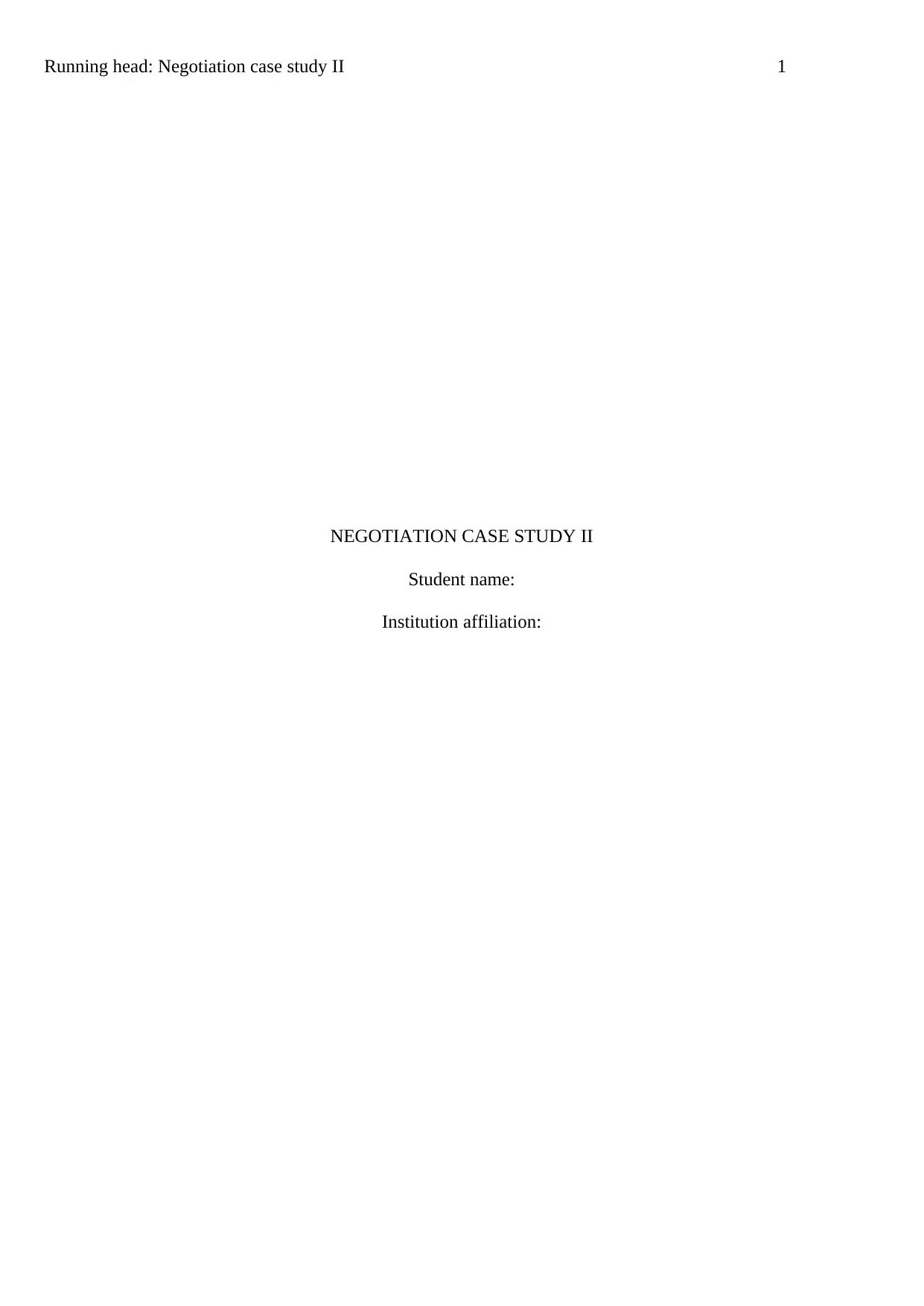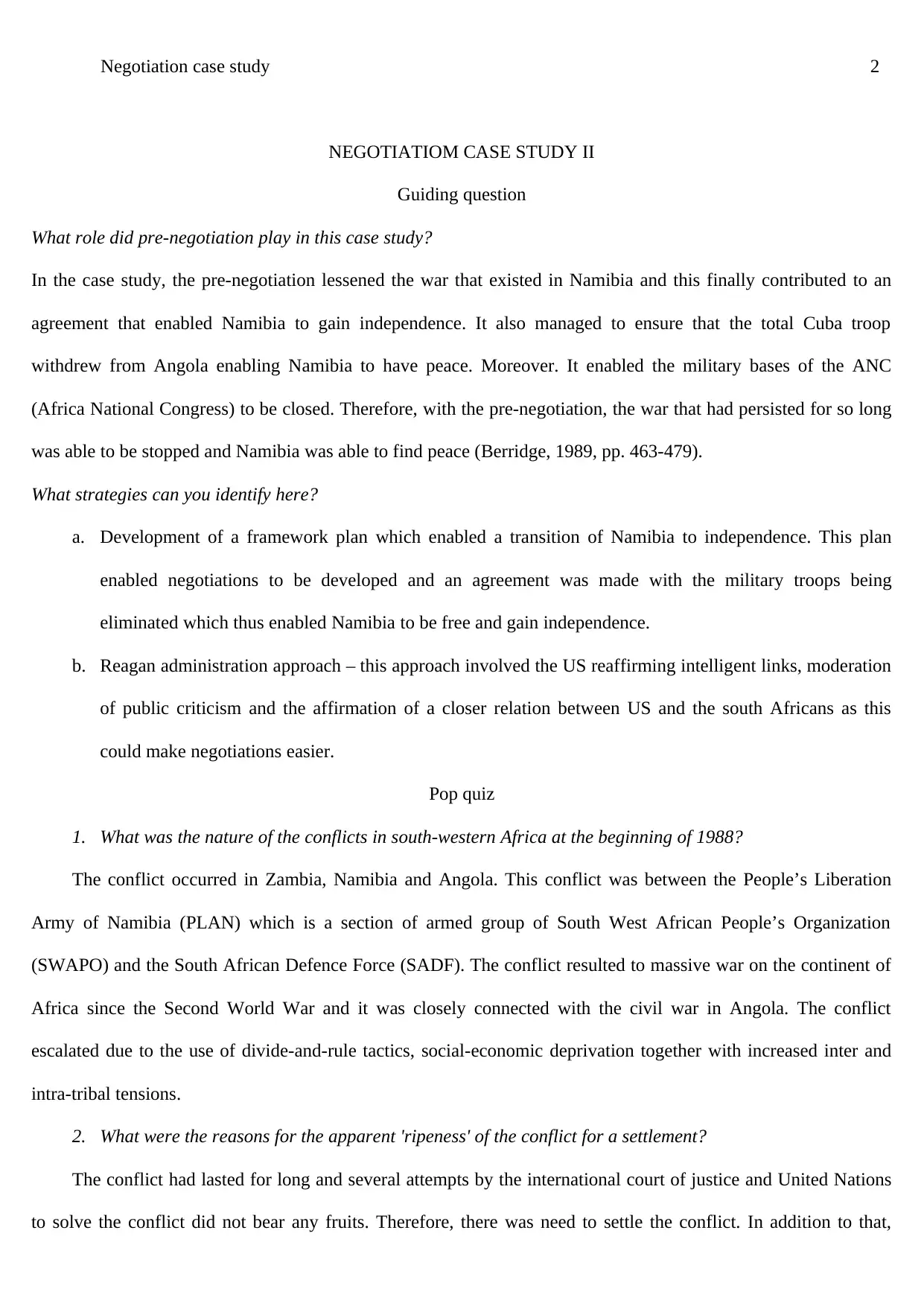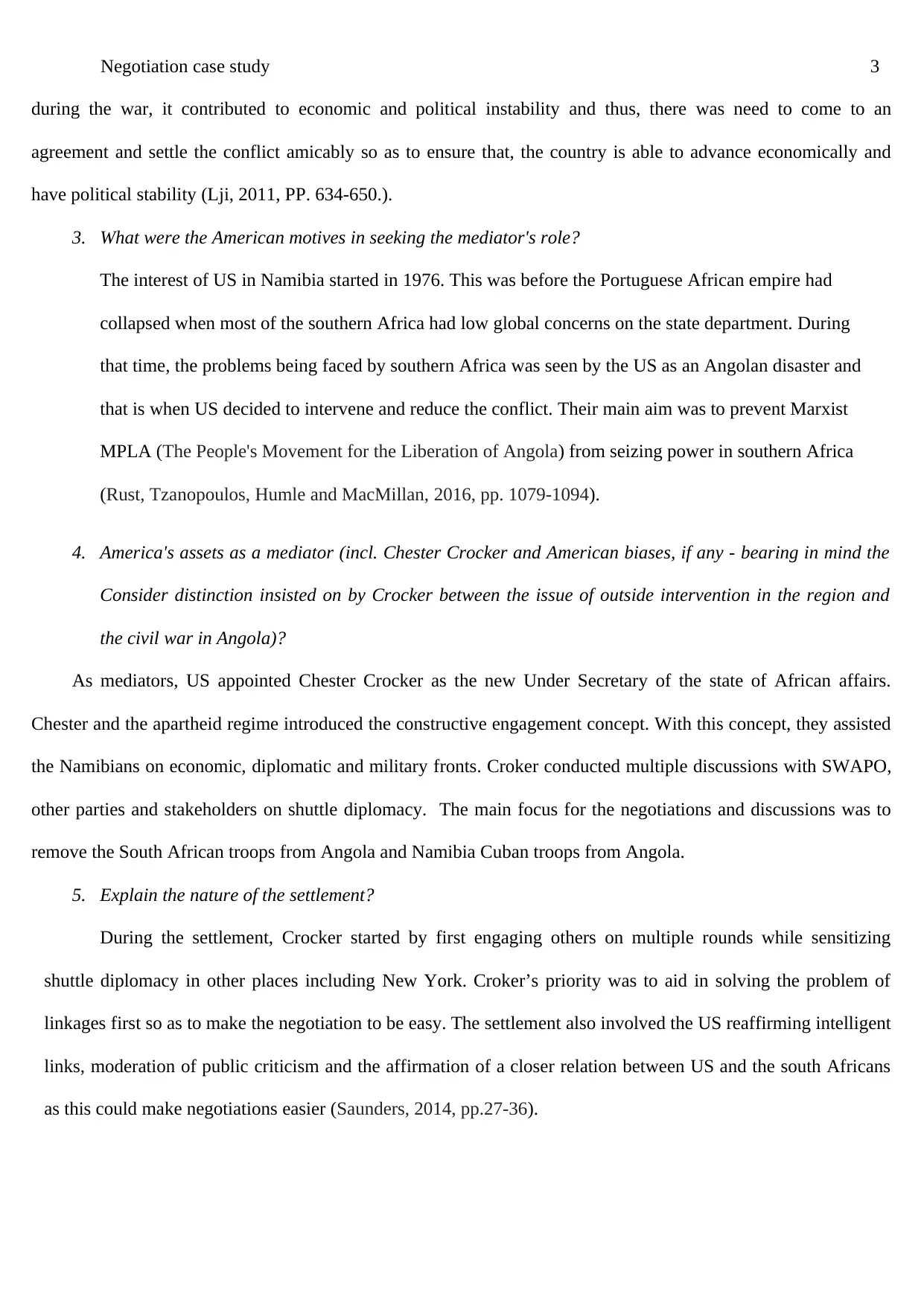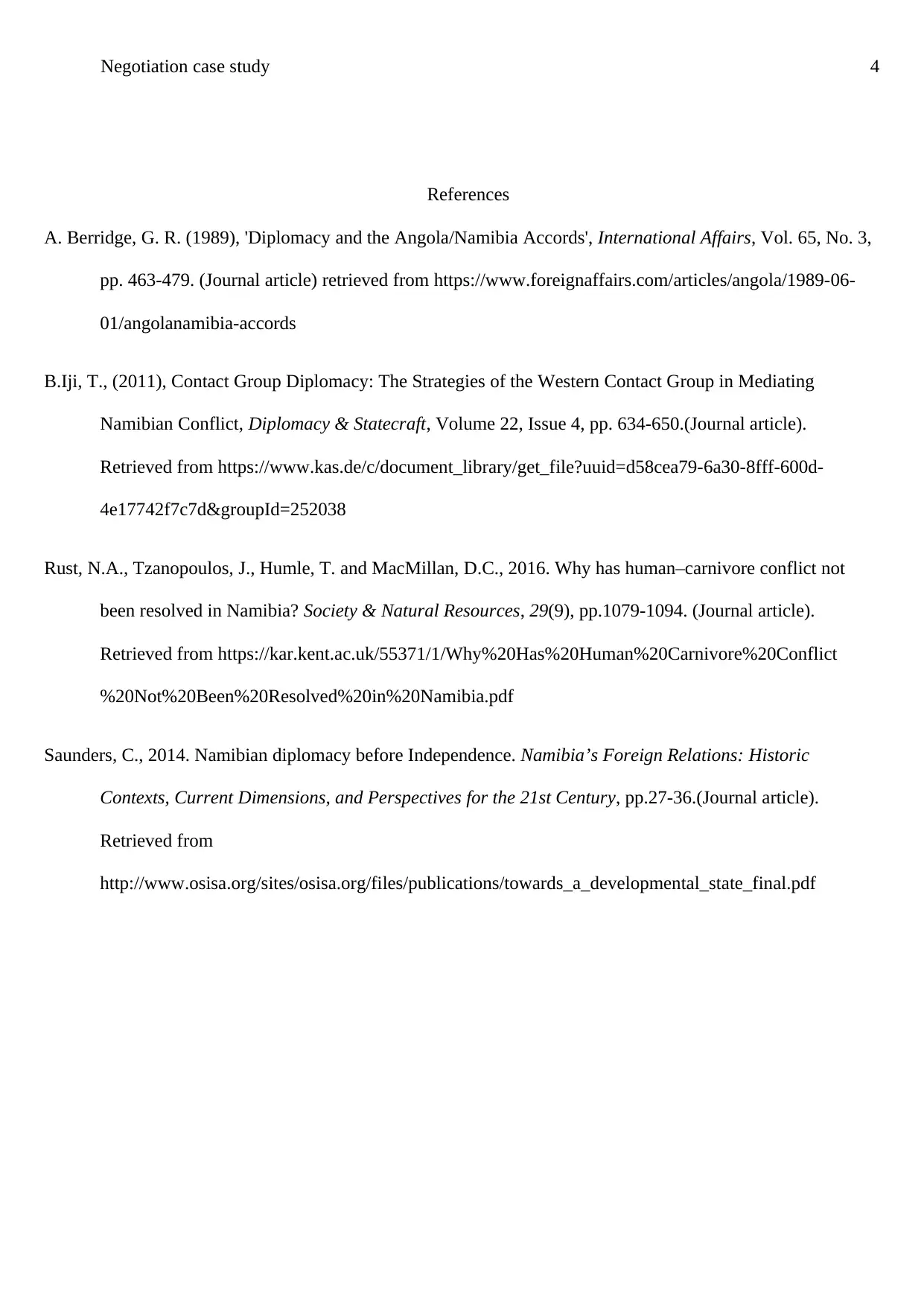Political Science: Negotiation Case Study II Analysis
VerifiedAdded on 2021/10/10
|4
|1009
|281
Case Study
AI Summary
This case study analyzes the negotiation process that led to Namibia's independence, focusing on the role of pre-negotiation, strategies employed, and the motivations of key players like the United States. The pre-negotiation phase played a crucial role in lessening the conflict, paving the way for Namibia's independence, the withdrawal of Cuban troops from Angola, and the closure of ANC military bases. The study identifies key strategies such as the development of a framework plan and the Reagan administration's approach. The conflict in southwestern Africa involved the People’s Liberation Army of Namibia (PLAN) and the South African Defence Force (SADF), escalating due to socio-economic issues and tribal tensions. The American motives for mediation stemmed from a desire to prevent Marxist influence in the region, with Chester Crocker leading the efforts. The settlement involved multiple rounds of negotiations, focusing on resolving linkages, moderating public criticism, and fostering closer relations. The case study provides valuable insights into conflict resolution, diplomatic strategies, and the complexities of international relations, with references to relevant academic sources.
1 out of 4






![[object Object]](/_next/static/media/star-bottom.7253800d.svg)